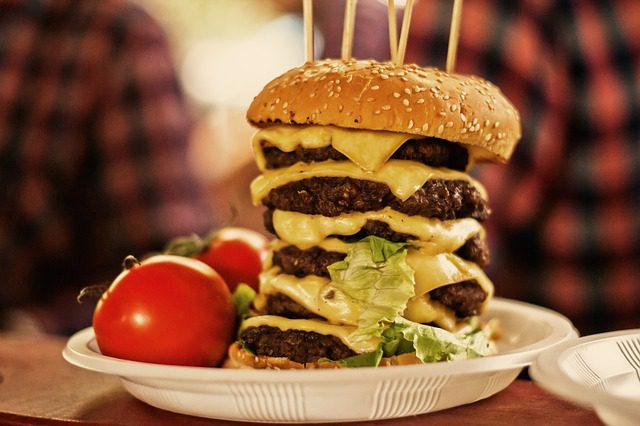Over half of the money that Americans spend on food goes for eating out in restaurants. And what we pay for the actual production of food by farmers is only 7.8 cents for every dollar we spend.
Caitlin Dewey, writing in the Washington Post, draws on data from the U. S. Department of Agriculture to give a fascinating breakdown of the American food dollar:
36.3 cents goes for food services (that is, the preparation of food in restaurants, fast food facilities, etc.)
15.2 cents goes for food processing (refinement of food in factories)
12.4 cents goes for retail trade (grocery stores)
9.1 cents goes for wholesale trade (grocery store suppliers)
7.8 cents goes for farm production (what farmers actually make)
3.9 cents goes for energy (fuel for farm equipment)
3.6 cents goes for transportation (shipping the food)
3.3 cents goes for finance and insurance (needed at every level of the food chain)
2.6 cents goes for advertising (to persuade consumers to buy the food)
2.4 cents goes for packaging (which has become necessary for sales)
2.2 cents goes for agribusiness (seed and fertilizer suppliers)
1.3 cents goes for legal and accounting expenses (at every level of the food chain)
Read the article for some fascinating discussion of these figures. The farmer’s share is at a record low.
The author cited a separate study that found that 50.1% of American consumer spending on food goes for eating out. That skews the “food services” number, given above. This does not mean that Americans necessarily eat half of their meals in restaurants or fast food joints, since eating out is more expensive than cooking at home, thus taking up more of the food budget. For meals that are made outside the home, farmers get an even smaller percentage of the total–just 2.4 cents–since restaurants must devote more of the expense to preparation, serving, and marketing.
According to an article by Maurie Backman at FoxBusiness, the total amount spent on eating out in 2016, the most recent year data is available (and the year for the above numbers), was $54.857 billion, compared to a grocery bill of $52.503 billion. The average household in 2015 spent $3,008 per year on eating out, and $4,015 on groceries.
What are we to make of these numbers?
Surely they underscore our staggering affluence. Also our staggering profligacy (defined as “reckless extravagance or wastefulness in the use of resources”). Also that we could do with less if we had to.
Notice that the total amount we spend for food is $107.36 billion. Just by way of comparison, our military budget for 2019 is $681.1 billion. Not saying that we should, but if we reduced that amount to what it was in 2017, $523.9 billion, we could pay for every Americans’ food supply, including buying their groceries and letting them eat out as much as they have been accustomed to. And still give the military a raise of $49.74 billion.
Most people in the world today and throughout human history have had as a first priority finding enough to eat. For most of us Americans today in this land of abundance, eating to survive is not our primary concern. On the contrary, our problems involve come from eating too much.
And from spending too much on things we do not, strictly speaking, actually need. Having food and raiment, we are still not content (1 Timothy 6:8). As the prophet asks,
Why do you spend your money for that which is not bread,
and your labor for that which does not satisfy? (Isaiah 55:2)To be sure, there are still hungry people in the world and in this country. Providing for them may be less costly than we realize.
But however askew our economy and our economic life might seem, we should be thankful to God for what is even more staggering than our complacency: His generosity in giving us this day our daily bread.
Photo by jimmyxrose via Pixabay, CC0, Creative Commons












